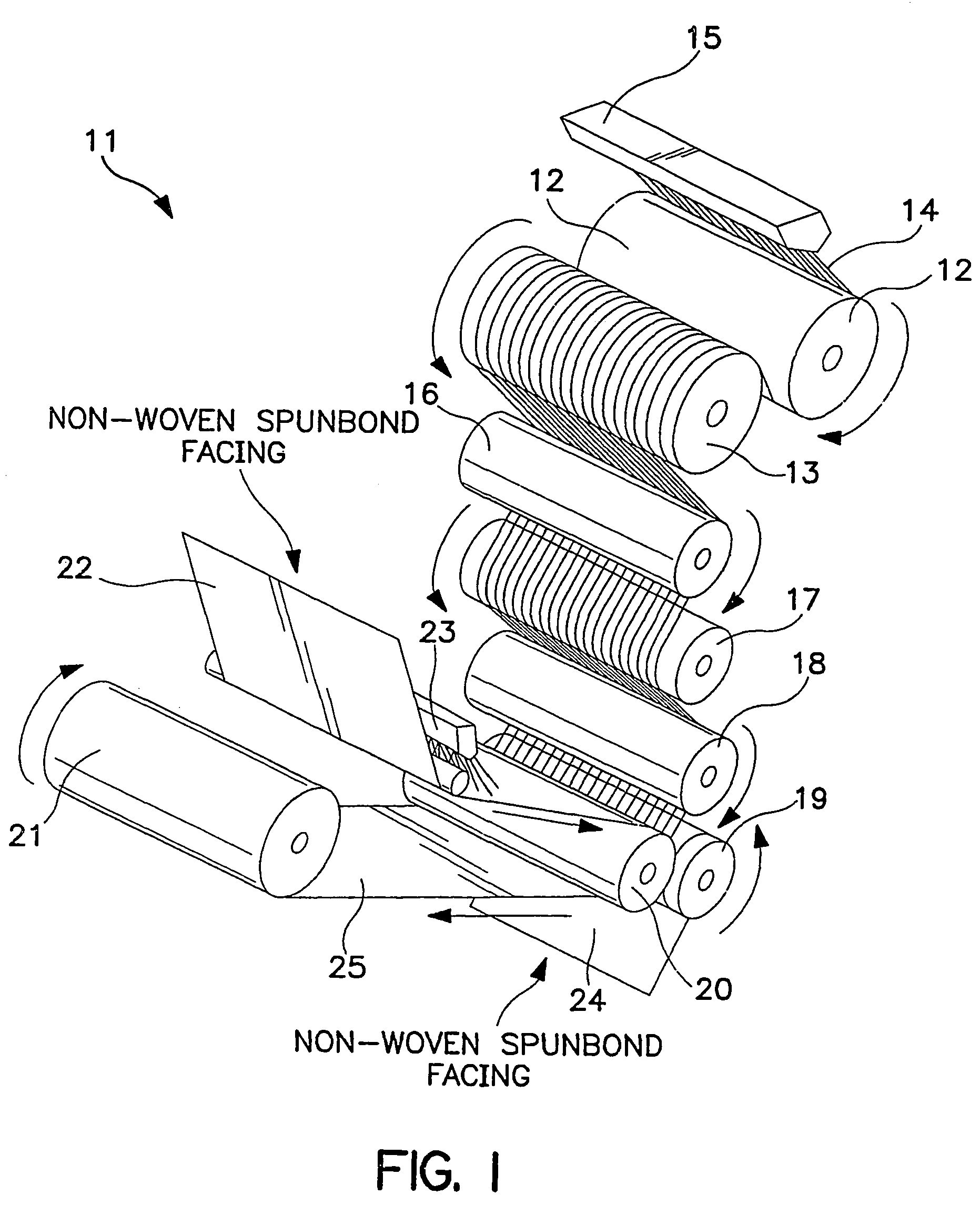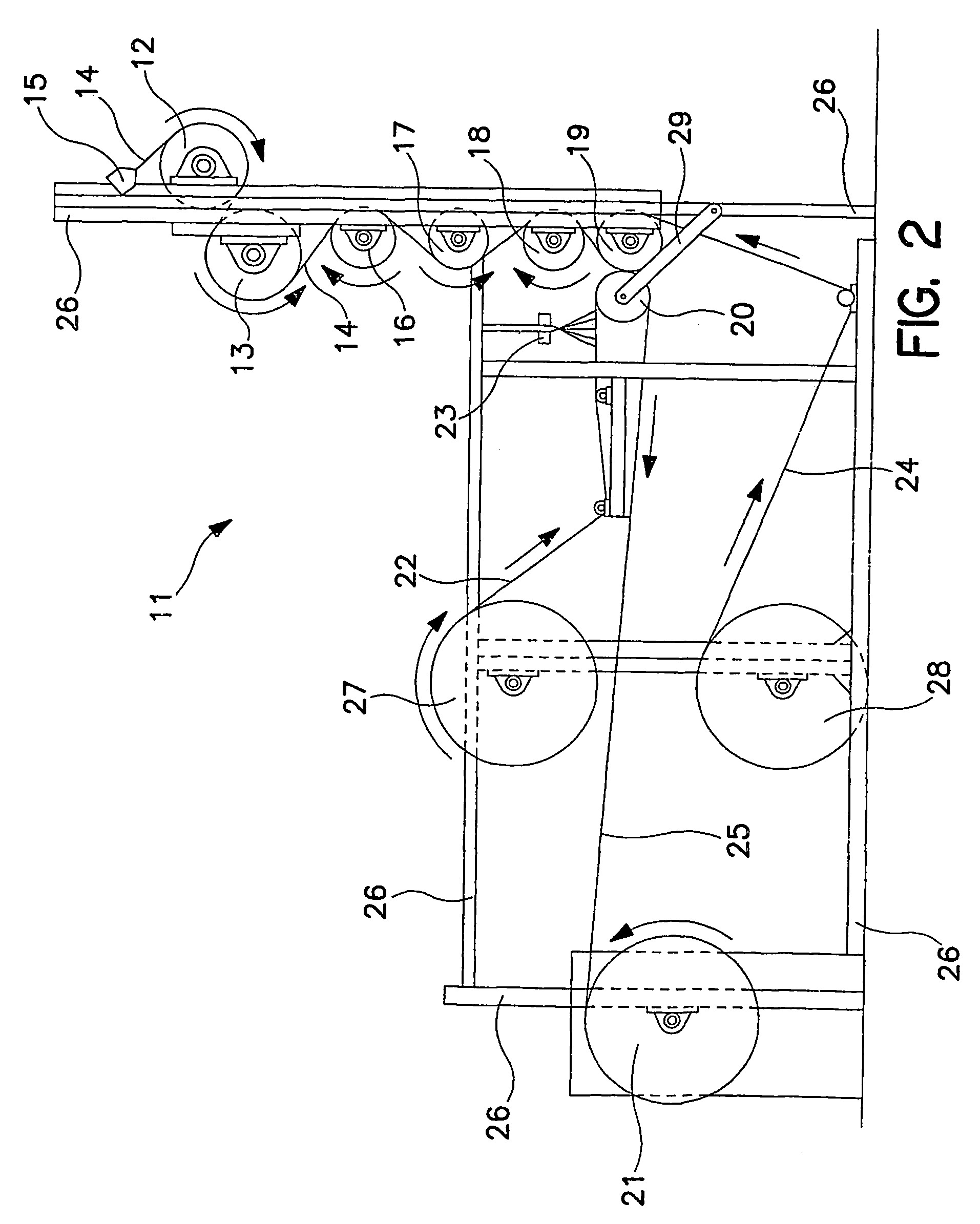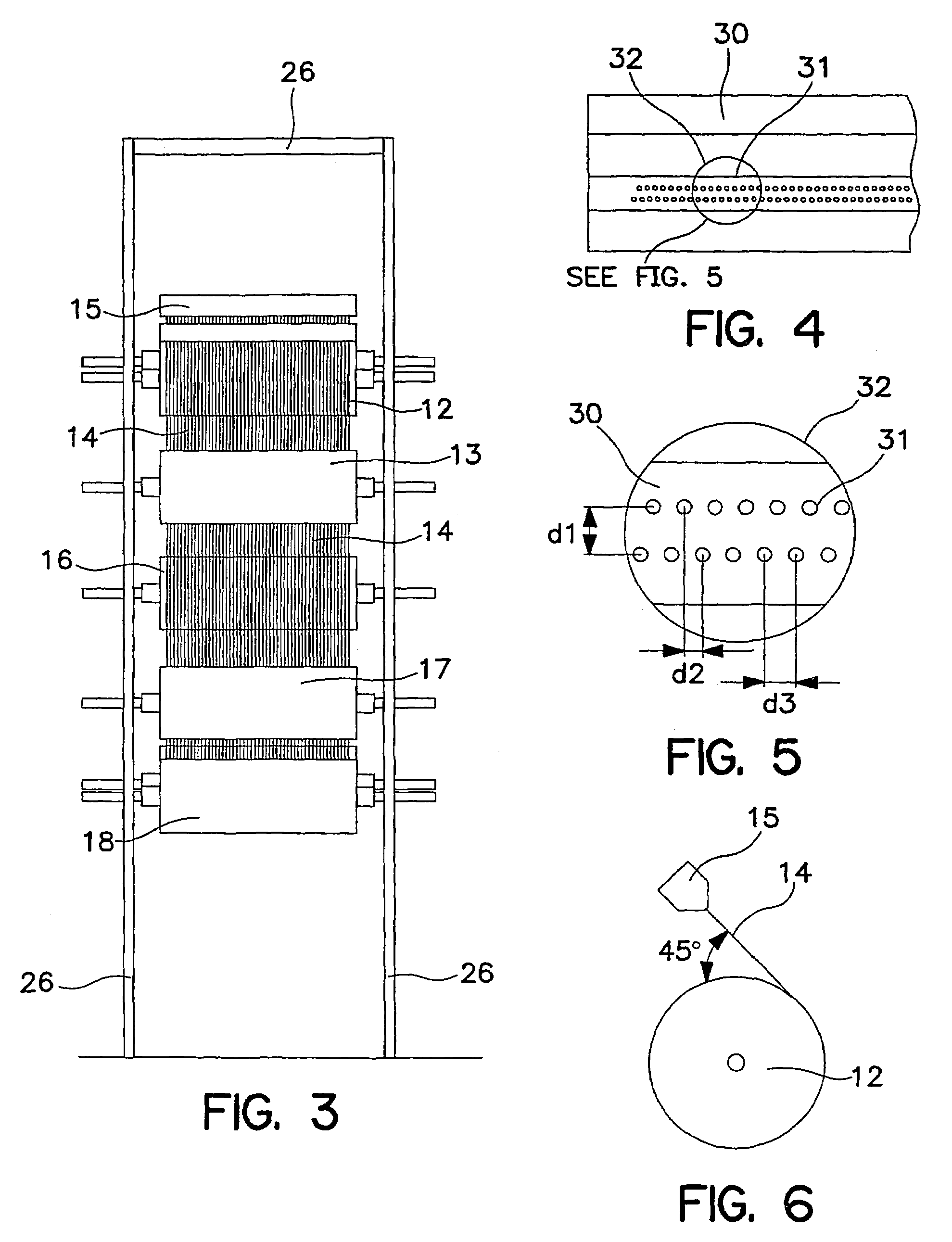Method of thermally processing elastomeric compositions and elastomeric compositions with improved processability
a technology of elastomeric compositions and thermal processing, applied in the field of elastomeric compositions, can solve the problems of no die design completely eliminated, no die design, no die downtime for cleanup, etc., and achieve the effect of improving processability and lowering extrusion temperatur
- Summary
- Abstract
- Description
- Claims
- Application Information
AI Technical Summary
Benefits of technology
Problems solved by technology
Method used
Image
Examples
example 1
[0077]Example 1 was formed similar to Control Example A above except that 250 parts per million of SILQUEST® PA-1 polyorganosiloxane processing aid was included in the elastomeric KRATON™ G2838 composition used to form the filaments of this Example 1. The melt temperature was about 425° F. The SILQUEST® PA-1 polyorganosiloxane processing aid was included in the elastomeric resin as a concentrate by adding 2.5% of a concentrate consisting of 1 weight percent of SILQUEST® PA-1 polyorganosiloxane and 99 weight percent of KRATON™ G2838 elastomer.
[0078]At a throughput of 3 rpm, the melt pressure was 750 psi and filament were produced having smooth surfaces without shark skinning. No melt fracture was observed. At a throughput of 6 rpm, the melt pressure was 1,260 psi and the filaments produced had slightly fractured surfaces but were otherwise clear. At a throughput of 9 rpm, the melt pressure was 1,700 and the filaments had melt fractured surfaces. And, at a throughput of 12 rpm, the me...
example 2
[0080]Example 2 was formed similar to Control Example A except that 500 parts per million of SILQUEST® PA-1 polyorganosiloxane processing aid was included in the elastic composition used to form the filaments of this Example 2. The melt temperature was about 425° F.
[0081]At a throughput of 3 rpm, the melt pressure was 800 psi and filament were produced having smooth surfaces without shark skinning. No melt fracture was observed. At a throughput of 6 rpm, the melt pressure was 1,300 psi and the filaments produced had slightly fractured surfaces but were otherwise clear. At a throughput of 12 rpm, the melt pressure was 2,140 and the filaments had melt fractured surfaces.
[0082]The peel strength of the laminate of Example 2 was 138 grams with a standard deviation of 12.
example 3
[0083]Example 3 was formed similar to Control Example A except that 1000 parts per million of SILQUEST® PA-1 polyorganosiloxane processing aid was included in the elastic composition used to form the filaments of this Example 3. The melt temperature was about 425° F.
[0084]At a throughput of 6 rpm, the melt pressure was 1,285 psi and filaments were produced having smooth surfaces without shark skinning. No melt fracture was observed. At a throughput of 9 rpm, the melt pressure was 1,740 psi and the filaments had melt fractured surfaces. At a throughput of 12 rpm, the melt pressure was 2,100 and the filaments produced had severe melt fracture.
[0085]The peel strength of the laminate of Example 3 was 103 grams with a standard deviation of 6.
PUM
| Property | Measurement | Unit |
|---|---|---|
| wt. % | aaaaa | aaaaa |
| wt. % | aaaaa | aaaaa |
| wt. % | aaaaa | aaaaa |
Abstract
Description
Claims
Application Information
 Login to View More
Login to View More - R&D
- Intellectual Property
- Life Sciences
- Materials
- Tech Scout
- Unparalleled Data Quality
- Higher Quality Content
- 60% Fewer Hallucinations
Browse by: Latest US Patents, China's latest patents, Technical Efficacy Thesaurus, Application Domain, Technology Topic, Popular Technical Reports.
© 2025 PatSnap. All rights reserved.Legal|Privacy policy|Modern Slavery Act Transparency Statement|Sitemap|About US| Contact US: help@patsnap.com



